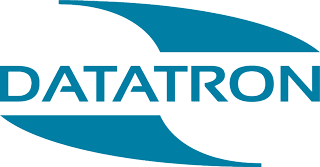Seven signs it’s time to update your HR processes
A company is its people. HR’s job is to look after those people. This is no easy task when you consider the mounting challenges they face today:
- The Great Resignation has highlighted how the workforce’s priorities have shifted. Workers want holistic benefits. As a result, retention difficulties plague companies.
- Workers expect a degree of flexibility and autonomy in their work arrangement. Thirty-eight percent of workers report working from home at least once over the past seven days.
- A remote, or even contracted, workforce comes with new and difficult questions around work culture, taxes and pay scales.
- Skillsets for a single role are evolving and old skills are being replaced with new. Twenty-nine percent of the skills present in typical job listings in 2018 are now considered obsolete.
And behind the scenes, out of date, unwieldy HR processes exacerbate the challenges an HR professional faces. To tackle the big issues HR teams need to eliminate the distraction managing the mundane. So how do you recognise the symptoms of an HR process in need of attention?
Signs and symptoms of outdated HR processes
Existing HR processes tend to be built around large offices housing employees on site. And often these processes are not designed to adapt and evolve. This shows itself when:
Too much paper takes up too much space. Paper records and retention guidelines mean large spaces devoted to cabinets and boxes. The words ‘retrieval’ or ‘document request’ mean misery.
Single forms take too long to make the rounds. In a remote world, even two signatures are a challenge to get on a physical form and it creates a bottleneck in any process.
Lost documents and errors are a theme. Forms go missing or come back with missing information creating extra delays, repeat tasks and frustration.
Process variation occurs between managers. Everyone has a unique working style, but variety in HR processes hinders searchability and retrieval. It can also affect the accuracy of reporting and even impact compliance.
Software and applications don’t talk. As new tools or devices entered the workplace, information stayed in legacy systems. Some don’t play together nicely and lead to extra steps and workarounds.
A process cannot be tracked. The status of a form or project is always a mystery like whether pregnancy risk assessments are complete. Every check-in involves emails, calls and status meetings to figure out the progress.
Employee frustration is real. Everything from recruitment efforts to leave requests to transfers between departments leave employees, both in the HR role and out, irritated. At its worst, personnel frustration shows itself in turnover.
All these signs equal wasted time, resources and energy. So, what now?
What’s the treatment?
You’ve spotted the symptoms of process fatigue in your own HR processes and your immediate concern is knowing where to begin. The effort to modernise begins with words like:
Digitise. Eliminate the physical records taking up space by making digital versions in an Electronic Document Management System. You can reclaim records space when files are housed in the cloud.
Automate. Introduce e-forms and digital workflows. A process becomes automated and trackable with reporting capabilities.
Build a digital toolkit. The effort to update may require new programs or software. Adopt tools to work in concert instead of conflict. You want to build a cohesive toolkit.
Find a digitisation partner. Going it alone when you update HR processes means spending more time learning things the experts already know. HR should focus on HR.
With the starting vocabulary in hand, one question remains.
What’s the result?
HR processes are unique to each company. This may leave you wondering if digitisation and automation would mean true transformation and process improvement.
Our work with Northumbria NHS Trust shows how an updated HR casefile system changed their file management. What consisted of paper files passed between line managers and HR is now a dynamic digital system. It grants managers access to the records of their own staff, and only their staff.
Likewise, we automated the study leave application for Newcastle upon Tyne NHS Foundation Trust. We took a paper form and transformed it into an intelligent e-form. An application which took weeks to pass around is now automatically forwarded to relevant personnel for sign off. It’s then filed to the correct personnel file without any aextra effort.
These positive outcomes came from a firm understanding of the people, information and programs at play.
Just as we did with our clients, any update to your HR processes must consider the future and goals of your company. It must be tailor made for your processes, systems, and needs.

